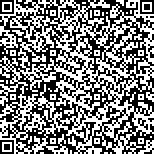| 引用本文: | 张家豪,章宇凯,祁宏生.基于虚拟边界的二维智能驾驶模型及应用[J].哈尔滨工业大学学报,2023,55(7):15.DOI:10.11918/202112028 |
| ZHANG Jiahao,ZHANG Yukai,QI Hongsheng.Two-dimensional intelligent driving model and application based on virtual boundary[J].Journal of Harbin Institute of Technology,2023,55(7):15.DOI:10.11918/202112028 |
|
| 摘要: |
| 为了对车辆在复杂异质交通流环境下(如出口匝道处)的侧向和纵向二维运动进行建模和预测,首先提出虚拟边界场概念,从微观层面上分析虚拟边界场对驾驶行为的作用,并据此建立虚拟边界场模型。同时考虑周围车辆的影响,将虚拟边界场理论与二维智能驾驶模型(intelligent driver model,IDM)结合,提出了基于虚拟边界场的二维IDM模型,刻画和预测车辆的二维轨迹。采用动态时间规整(dynamic time marping,DTW)的边界场优化方法对模型参数进行标定,并对模型的有效性进行验证。采用粒子群算法(particle swarm optimization,PSO)求解出最优虚拟边界场位置,并进行误差分析。结果表明:针对Mirror-Traffic数据,车辆轨迹的预测误差可控制在3.1%~8.2%,针对NGSIM数据的轨迹预测误差可控制在3.8%~28.2%,所提出的模型能够描述并预测传统车辆在匝道处混合交通流环境下的横向和侧向的二维运动。所提出的方法可以为自动驾驶车辆在混合交通流中的轨迹规划提供基础信息。 |
| 关键词: 虚拟边界场 智能驾驶 二维IDM 车辆跟驰 匝道 |
| DOI:10.11918/202112028 |
| 分类号:U491;U463.6 |
| 文献标识码:A |
| 基金项目:国家自然科学基金(4,2);浙江省公益技术研究计划(LGF22E080007);教育部人文社科一般项目(21YJCZH116);浙江大学平衡中心自主科研项目 |
|
| Two-dimensional intelligent driving model and application based on virtual boundary |
|
ZHANG Jiahao,ZHANG Yukai,QI Hongsheng
|
|
(Institute of Intelligent Transportation, College of Civil Engineering and Architecture, Zhejiang University, Hangzhou 310058, China)
|
| Abstract: |
| To describe and predict the vehicles′ two-dimensional movements under heterogeneous traffic environments (such as off-ramps), this research firstly proposes the concept of virtual boundary field (VBF). The influence of VBF on driver behaviors is analyzed from a microscopic point of view. The VBF model hence is established. A two-dimensional IDM (intelligent driver model) model that considers the VBF is constructed which takes the surrounding vehicles into account. The proposed model is capable of describing and predicting the two-dimensional trajectories of vehicles. To calibrate the parameters in VBF, the dynamic time wrapping (DTW) is employed as the objective. The PSO (particle swarm optimization) is used to optimize the location of VBF. The validation results show that the trajectories prediction error is about 3.1%-8.2% for Mirror traffic data, and is 3.8%-28.2% for NGSIM data, and the proposed model is capable of describing and predicting the lateral and lateral two-dimensional motion of conventional vehicles in mixed traffic flow environments on ramps. The proposed model can be used to provide basic information for the trajectories planning of autonomous vehicles in mixed traffic flow. |
| Key words: virtual boundary field intelligent driving 2D-IDM car following behavior ramp |







